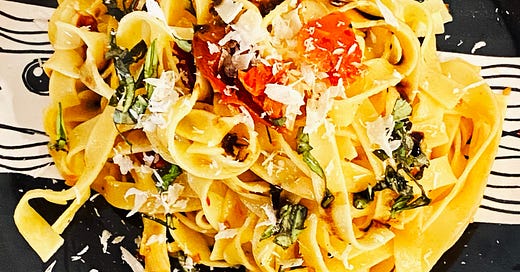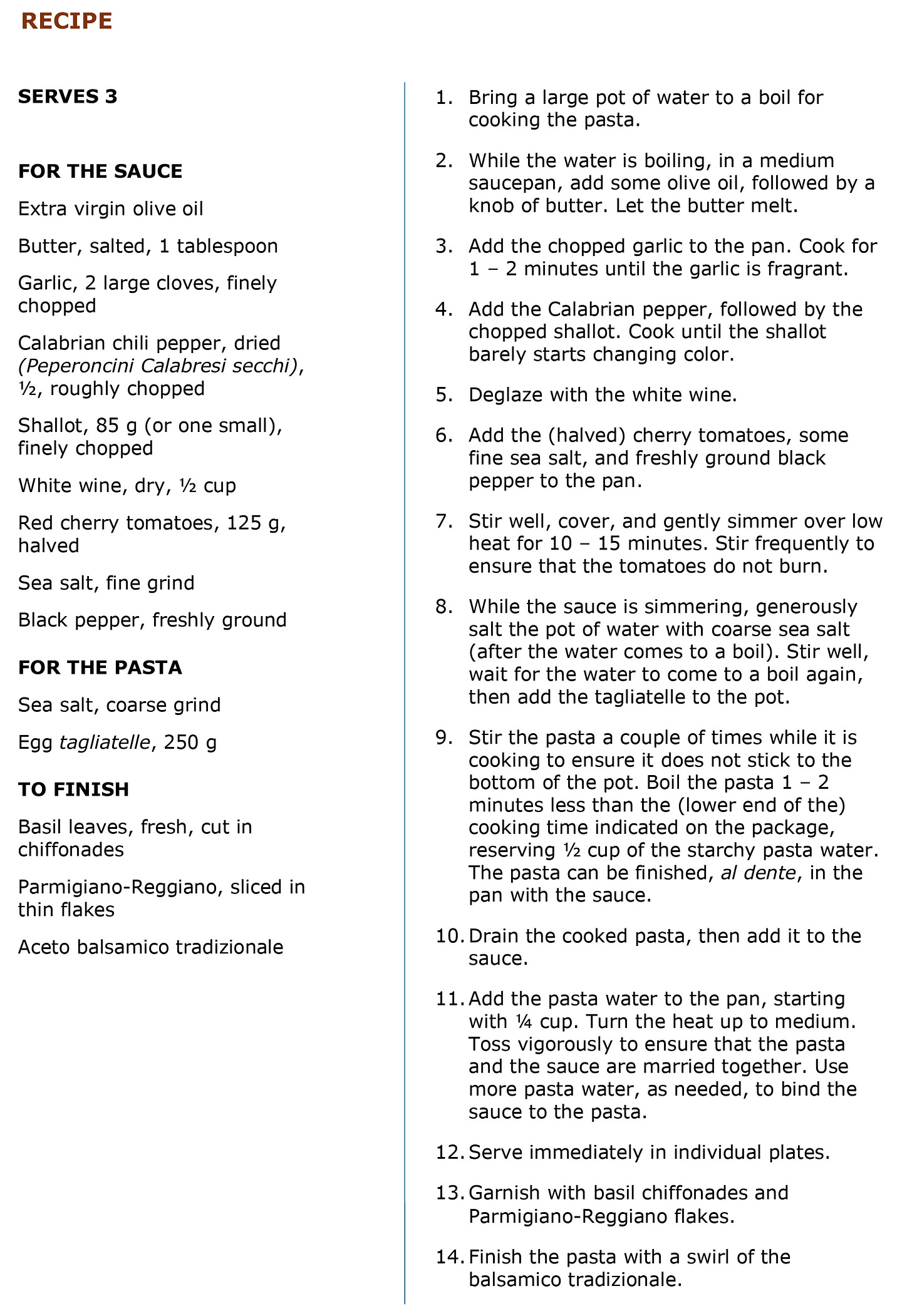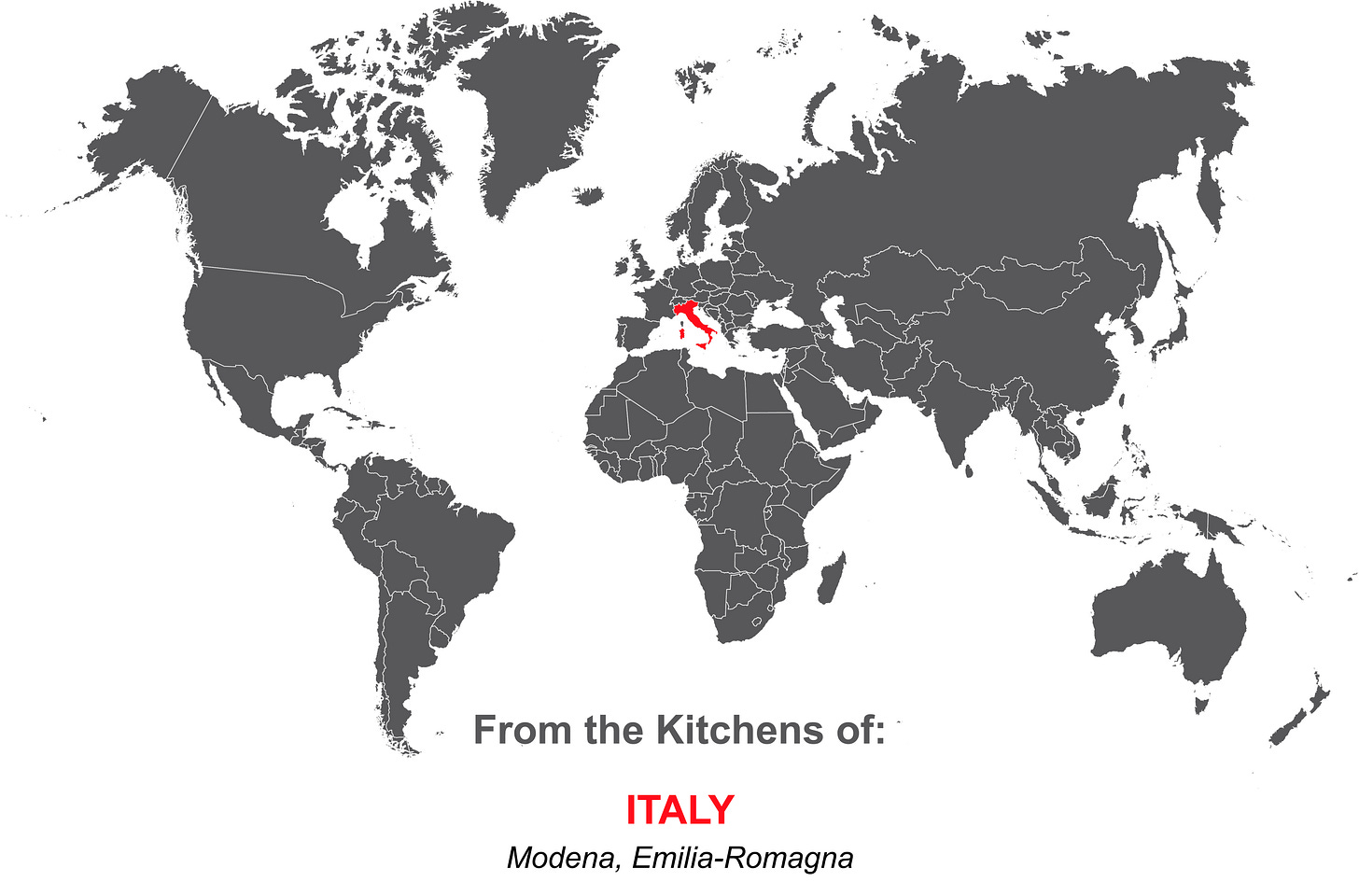Tagliatelle with Cherry Tomatoes and Balsamico
This is a minimalistic cherry tomato pasta, which is elevated by balsamico tradizionale to make it truly special.
Aceto balsamico tradizionale: The passion of Emilia-Romagna
It was a sweltering July afternoon in Parma (Italy) with the temperature soaring just past 100 degrees Fahrenheit. Determined to make the most out of my time, I took a stroll in the Piazza del Duomo, the city's main square, while my husband and son stayed back at the Airbnb waiting for the afternoon heat to subside. As I walked out of the beautiful medieval-styled Baptistery, I realized that our chances of visiting Modena during this Emilia-Romagna trip were slim. Modena is just about an hour away from Parma, but there was so much still to do in Parma and not enough time was remaining. Adding another city to the trip would not do justice to either of them. Slow travel seemed more fulfilling.
While embracing slow travel, I wanted to check off one Modena-to-do item on my list. I wanted to find that precious elixir of Modena in Parma itself: aceto balsamico tradizionale (traditional balsamic vinegar). This must not be mistaken with the balsamic condiments or glazes commonly found in grocery stores. In contrast to its cheaper alternatives, balsamico tradizionale is a rich, glossy and viscous syrup that is deep brown in color. You will not taste any acid in tradizionale. It has a complex taste profile with the sweet and tart flavors from the grapes, primarily Trebbiano and Lambrusco, exquisitely balanced during the slow and carefully controlled aging process in barrels made from five different types of wood. To make the cut for tradizionale, the vinegar must be aged for a minimum of 12 years. When labeled as “Extravecchio,” or extra old, that bar is raised to 25 years and the bottle sealed with an unmissable gold neck band. The tradizionale may almost bear the same name as the other balsamic vinegars available on market shelves, with an extra word in its label, but this is an other-worldly beast, and one that is not cheap to buy. Luckily, a few drops are all you will need to transform your pasta, Parmigiano-Reggiano, or even strawberries from the mundane to the extraordinary.
Back in Parma: I bought my prized (and pricey) bottle of balsamico tradizionale there to bring home with us to Seattle.
Then the bottle sat (and sat) in the kitchen cabinet. Admittedly, I had no plan for it. I wanted to do a little more than drizzling it over cheese or strawberries. I had hoped that eating in Modena would inspire a recipe, but our trip took a different turn. Finally, I did what I do best: make a pasta. A minimalistic pasta is an excellent way to showcase a rich ingredient, such as the balsamico tradizionale. My recipe uses the balsamico to transform a simple cherry tomato pasta into something that's special. Paired with a light-bodied red wine, it makes for, in my opinion and my son's (barring the wine, of course), a perfect meal.
It took some time, but the balsamico turned out to be the best souvenir from our trip to Emilia-Romagna, the region that houses both Parma and Modena! I hope you will cook this pasta. I also hope that my story will inspire you to visit these beautiful Italian cities that are so rich in food and culture. Ignore all those recommendations that say these cities can be covered in a day. They most certainly cannot in any meaningful way. Embrace slow travel and slow food!
COOKING NOTES
On Peperoncini Calabresi Secchi: Dried Calabrian chili pepper can be found in Italian or other specialty food stores. It can also be substituted by another mild-flavored pepper.
On Egg Tagliatelle: This is commonly available in grocery stores. If you are new to the pasta world, and don’t have a favorite brand yet, I would recommend Rustichella d’Abruzzo. For a more festive and visually striking presentation, try Rustichella d’Abruzzo’s egg tagliatelle capricciose, which translates to “capricious” in Italian. Unlike the long, flat ribbons of traditional tagliatelle, the capricciose variant features whimsical, frilled edges that not only enhance its visual appeal but also bind the sauce more effectively.
On Chiffonading Basil: Cut the basil in chiffonades (as shown here), just before you are ready to add it to the pasta, using a sharp knife. This keeps the basil from oxidizing.
On Slicing Parmigiano-Reggiano: Use a vegetable peeler to slice the hard cheese into thin flakes/shavings (as shown here).
On Aceto Balsamico Tradizionale: It can be found in Italian or other specialty food stores. Make sure the label includes the magic word “tradizionale.” When aged for at least 12 years, the bottle will have an ivory neck band, while a gold neck band is used to indicate a minimum of 25 years of aging. The latter will also be labeled “Extravecchio.”






